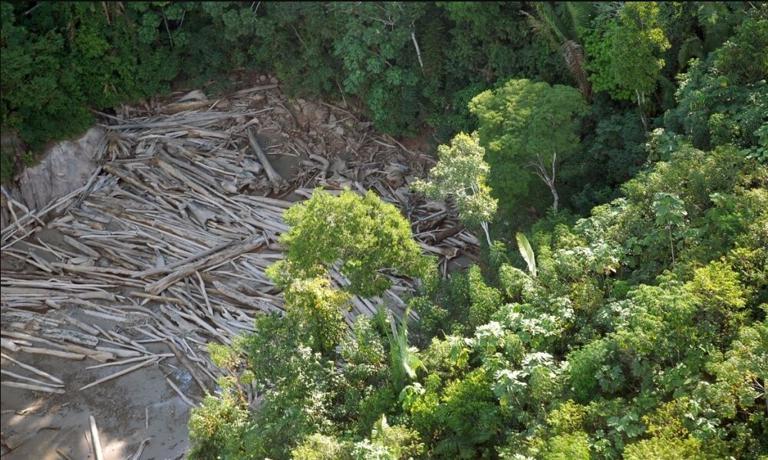Using a method based on satellite images and artificial intelligence, Brazilian researchers have shown that the priority area for actions to combat illegal deforestation could comprise 27.8% less territory than the 11 municipalities monitored by the federal government under the current strategy, known as the Amazon Plan 2021/2022. This monitoring ignores new deforestation frontiers outside the targeted areas.

According to an article by the researchers, published in June in Conservation Letters, areas of the Amazon classified as high priority for having the highest deforestation rates totaled 414,603 square kilometers (km2) this year, while the total area targeted by the plan for the 11 municipalities is 574,724 km2. In other words, the area to be monitored could be reduced by 160,000 km2, which is about the size of Suriname.
However, while the deforestation hotspots identified by the researchers accounted for 66% of the average annual deforestation rate, the 11 municipalities targeted by the plan represented 37% of the deforestation rate for the last three years (2019-21).
In the article, scientists affiliated with Brazil's National Space Research Institute (INPE) and universities in the United States conclude that the proposed method would give monitoring and law enforcement a tighter focus. Furthermore, they stress, it reveals new deforestation frontiers outside the priority area and hence not covered by the official monitoring plan.
"Using this new approach, we concluded that prioritizing areas with higher deforestation rates would be more effective than limiting the monitoring to certain municipalities, This is an important finding, given that the agencies responsible for law enforcement in this case, mainly IBAMA and ICMBio, have had their budgets and staffing steadily whittled down. Some of these deforestation hotspots are in the 11 municipalities, but others are in the vicinity and constitute new frontiers," Guilherme Augusto Verola Mataveli, corresponding author of the article, told Agência FAPESP. Mataveli is a researcher in INPE's Earth Observation and Geoinformatics Division.
The National Council for Legal Amazonia (CNAL), which oversees the Amazon Plan 2021/2022, responded as follows to Agência FAPESP's request for comment: "The aim [of the plan] was to focus on where the occurrence of illegal environmental activities had most impact on the results of Brazil's environmental management without neglecting the need to act in other areas of Legal Amazonia."
Legal Amazonia is an area of more than 5 million km2 comprising the states of Acre, Amapá, Amazonas, Maranhão, Mato Grosso, Pará, Rondônia, Roraima, and Tocantins. It was created by federal laws dating back to 1953 in order to promote special protection and development policies for the area.
According to CNAL, "the 11 municipalities were chosen because they had the largest deforested area and the highest incidence of fires, with the possibility of including others to be mapped by the Center for Management and Operations of the Amazon Protection System [Censipam]."
The council also stated that INPE was one of the "leading institutions in the process of choosing priorities," and that the scientists who conducted the research "could have contributed in an institutional manner as the opportunity arose."
"CNAL always works with official information managed, processed and analyzed by official government bodies," its statement said.
Advances in data processing
The authors of the article note that deforestation in the 11 municipalities targeted by the plan has been significant in recent years and that this is grounds for monitoring but not sufficient to prioritize only these areas, which are as follows: São Félix do Xingu, Altamira, Novo Progresso, Pacajá, Portel, Itaituba and Rurópolis (Pará); Apuí and Lábrea (Amazonas); Colniza (Mato Grosso); and Porto Velho (Rondônia).
They also note that despite concentration on these areas for the purposes of monitoring and law enforcement, deforestation increased 105% between February and April 2021 compared with the average for the same period between 2017 and 2021. DETER, Brazil's official deforestation alert program, pointed to 524.89 km2 of new deforestation sites in these areas.
"The study validates the importance of INPE, which for 60 years has trained outstanding researchers, producing science and technology from satellite data for society and national development. The advances in data processing embodied in the use of artificial intelligence for the planning of actions to combat deforestation are critical to mitigate the country's environmental problems and construct a national sustainable development plan," said Luiz Aragão, last author of the article. Aragão heads INPE's Earth Observation and Geoinformatics Division,
Sources:
FAPESP
https://phys.org/news/2022-08-ai-priority-areas-action-combat.html .
Provided by the IKCEST Disaster Risk Reduction Knowledge Service System
Comment list ( 0 )
